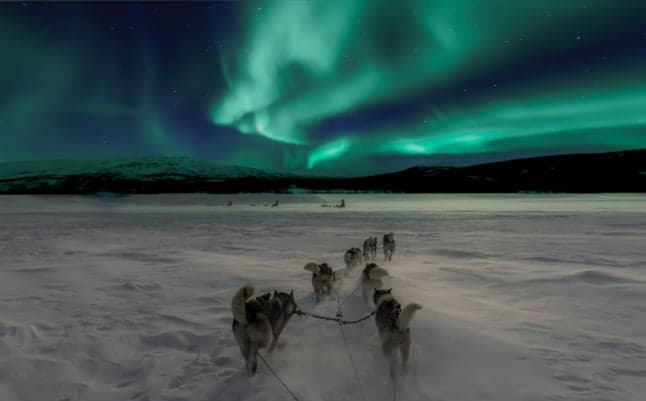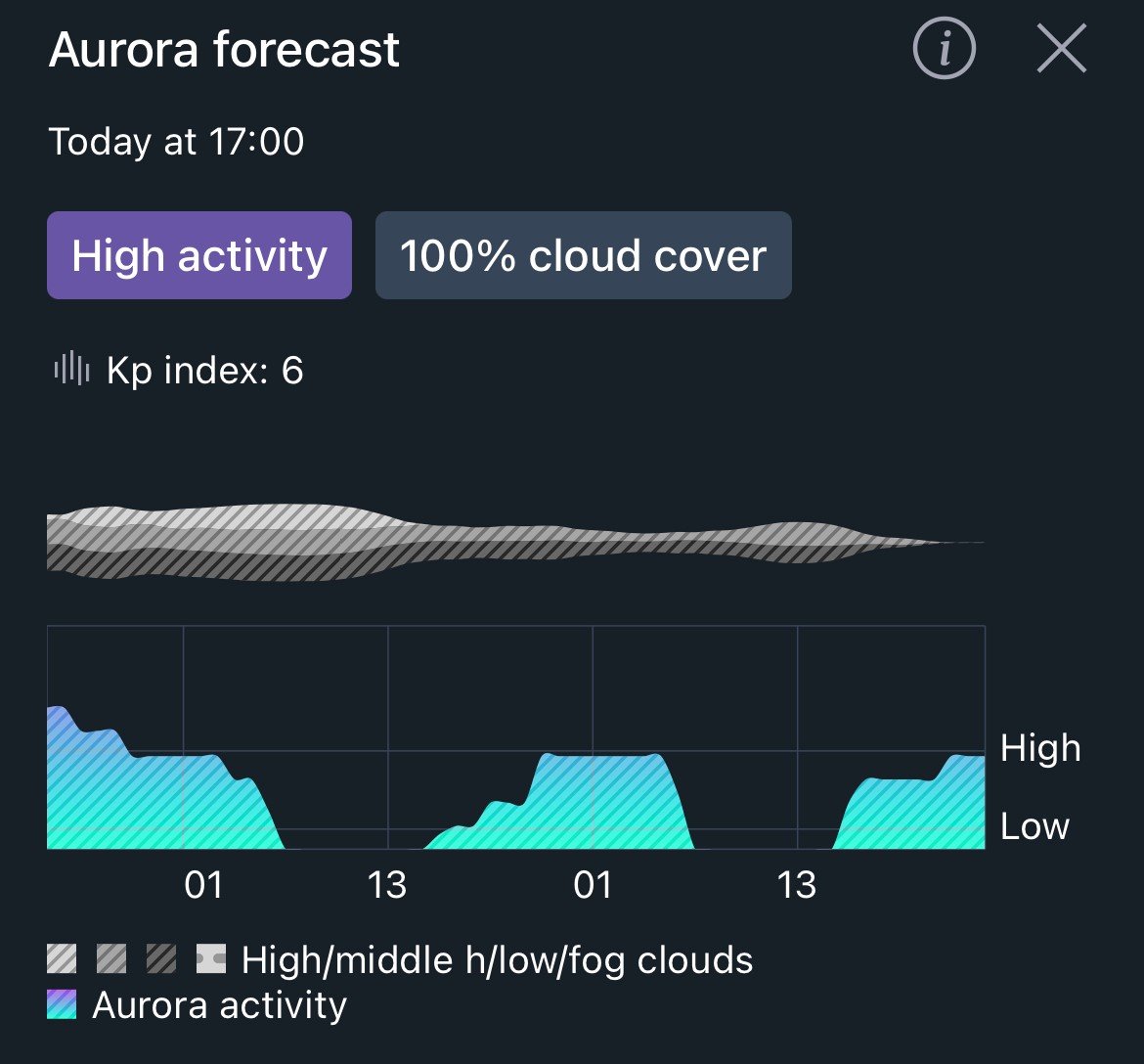How to maximise your chances of seeing the Northern Lights in Norway

How can you know when or if you will see the Northern Lights in Norway? Are there any forecasts to follow? Here are a few essential tips to help maximise your chances.
The Northern Lights are on many people's bucket lists for obvious reasons.
If you live in northern Norway, it's mostly about being patient, and the lights will eventually appear. The further north you are, the better your chances of seeing the lights, as they only appear around the Earth's magnetic poles.
Factors such as solar activity and the weather forecast will also impact your chances to see the Northern Lights. If the sky is overcast, you will likely be left disappointed, for obvious reasons.
In places like Oslo, the lights appear rarely but it is not unheard of and can happen a few times a year. The good news is that the lights will be more visible over the next few years due to increased solar activity. This means the lights will be more common, much further south.
Predicting when the Northern Lights will be visible is complex, but there are a few ways you can improve your chances.
Keep an eye on websites such as the University of Alaska's Aurora Forecast, which naturally doesn't focus on Norway but can still give you a good idea. The Space Weather Prediction Center and SpaceWeather Live are another two reliable websites.
To make the most of the information these sites provide, you'll need to learn a little bit about the Northern Lights themselves. However, you will by no means need to become an expert in solar activity. Instead, you will just need to be familiar with something called the "KP Index".
The northern parts of the Earth are divided into KP zones. The zones range from one to nine. For example, Tromsø, in the north, is in KP1 and Oslo in the southeast is in KP5. The stronger the geomagnetic activity, the higher the KP number, and the further south the lights can be seen. So, if, say, a KP2 is predicted, then only northern Norway is likely to see the Northern Lights. Here's a handy KP map that you can use to work out which KP zone your area is in.
If you'd rather not have to think too much about when and where to see the Northern Lights and instead have someone tell you when they are likely to be visible, it may be worth joining a Facebook group, such as Nordlysgruppa for Midt og Sør-Norge.
You can also download an app. My Aurora Forecast is popular, and there are free versions for both iPhone and Android. You can either choose what location you want to track or tell it to automatically change its settings based on where you are. The app will send you notifications when there's a high chance of seeing the Northern Lights, but it also gives you a long-term forecast of the KP index. It also gives you percentages for how likely you are to see the Northern Lights in your area, now and in the next 30 minutes.
Norway's YR weather app combines both the KP forecast with the weather to let users now how likely any aurora activity is. Below you can see a picture of the feature in action.

The YR weather app in action. Photo: screenshot
To have the best chance of seeing the Northern Lights, the sky will need to be clear, and you will preferably need to be away from areas with light pollution. You can check with the weather with the YR app from the Norwegian Meteorological Institute.
READ ALSO: Essential tips for taking the best pictures of the Northern Lights
Comments
See Also
The Northern Lights are on many people's bucket lists for obvious reasons.
If you live in northern Norway, it's mostly about being patient, and the lights will eventually appear. The further north you are, the better your chances of seeing the lights, as they only appear around the Earth's magnetic poles.
Factors such as solar activity and the weather forecast will also impact your chances to see the Northern Lights. If the sky is overcast, you will likely be left disappointed, for obvious reasons.
In places like Oslo, the lights appear rarely but it is not unheard of and can happen a few times a year. The good news is that the lights will be more visible over the next few years due to increased solar activity. This means the lights will be more common, much further south.
Predicting when the Northern Lights will be visible is complex, but there are a few ways you can improve your chances.
Keep an eye on websites such as the University of Alaska's Aurora Forecast, which naturally doesn't focus on Norway but can still give you a good idea. The Space Weather Prediction Center and SpaceWeather Live are another two reliable websites.
To make the most of the information these sites provide, you'll need to learn a little bit about the Northern Lights themselves. However, you will by no means need to become an expert in solar activity. Instead, you will just need to be familiar with something called the "KP Index".
The northern parts of the Earth are divided into KP zones. The zones range from one to nine. For example, Tromsø, in the north, is in KP1 and Oslo in the southeast is in KP5. The stronger the geomagnetic activity, the higher the KP number, and the further south the lights can be seen. So, if, say, a KP2 is predicted, then only northern Norway is likely to see the Northern Lights. Here's a handy KP map that you can use to work out which KP zone your area is in.
If you'd rather not have to think too much about when and where to see the Northern Lights and instead have someone tell you when they are likely to be visible, it may be worth joining a Facebook group, such as Nordlysgruppa for Midt og Sør-Norge.
You can also download an app. My Aurora Forecast is popular, and there are free versions for both iPhone and Android. You can either choose what location you want to track or tell it to automatically change its settings based on where you are. The app will send you notifications when there's a high chance of seeing the Northern Lights, but it also gives you a long-term forecast of the KP index. It also gives you percentages for how likely you are to see the Northern Lights in your area, now and in the next 30 minutes.
Norway's YR weather app combines both the KP forecast with the weather to let users now how likely any aurora activity is. Below you can see a picture of the feature in action.

To have the best chance of seeing the Northern Lights, the sky will need to be clear, and you will preferably need to be away from areas with light pollution. You can check with the weather with the YR app from the Norwegian Meteorological Institute.
READ ALSO: Essential tips for taking the best pictures of the Northern Lights
Join the conversation in our comments section below. Share your own views and experience and if you have a question or suggestion for our journalists then email us at [email protected].
Please keep comments civil, constructive and on topic – and make sure to read our terms of use before getting involved.
Please log in here to leave a comment.